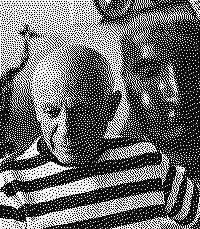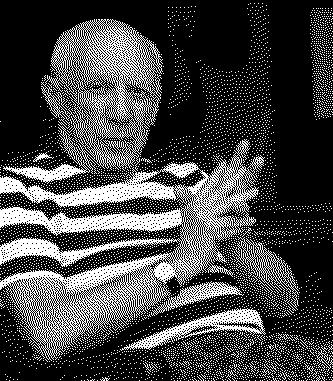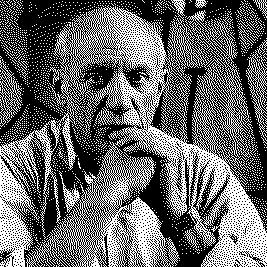Artists/Pablo Picasso
Fast Facts
Co-Founder of Cubism
Picasso, along with Georges Braque, is credited with creating Cubism, a revolutionary art movement that introduced a new way of representing reality in art. Cubism broke away from traditional perspective, depicting subjects from multiple angles simultaneously.
Versatile Artist
Picasso was exceptionally prolific throughout his long life, working not only as a painter but also as a sculptor, printmaker, ceramicist, stage designer, poet, and playwright. His work is often categorized into periods, including the Blue Period, Rose Period, African-influenced Period, Analytic Cubism, and Synthetic Cubism.
Prolific
Throughout his life, he produced approximately 13,500 paintings, 100,000 prints, 300 sculptures and ceramics.
Personal Life
Picasso's personal life was as varied and vibrant as his art, known for his charismatic personality and relationships with numerous lovers and muses who often appeared in his works.
Biography



Pablo Picasso, born on October 25, 1881, in Málaga, Spain, emerged as one of the most revolutionary artists of the 20th century. His influence spans across painting, sculpture, printmaking, ceramics, stage design, and writing, contributing significantly to the development of modern art with his innovative approach and diverse artistic expressions.
Picasso's early life was steeped in art, thanks to his father, Don José Ruiz y Blasco, a painter and art professor who recognized his son's talent early on. By the age of seven, Picasso was formally trained in figure drawing and oil painting by his father, demonstrating a prodigious aptitude that suggested he was destined for greatness. His formative years were marked by a move to A Coruña in 1891, where his father took up a professorship at the School of Fine Arts, further nurturing Picasso's burgeoning skills.
At 13, Picasso's artistic journey took a pivotal turn when he attended the School of Fine Arts in Barcelona, showing signs of his future genius. By 1897, he ventured to Madrid to study at the Real Academia de Bellas Artes de San Fernando, Spain's premier art academy. However, Picasso's insatiable curiosity led him to spend more time exploring the masterworks at the Prado Museum than attending formal classes, absorbing the essence of art from Rembrandt, Vermeer, El Greco, Goya, and Velázquez.
Picasso's Parisian sojourns began in 1900, marking the start of a transformative period in his career and life. Living in poverty, Picasso's resilience and creativity flourished, leading to the development of distinct artistic phases that defined his work: the Blue Period (1901-1904), characterized by somber, monochromatic paintings; the Rose Period (1904-1906), with its warmer tones and focus on circus life; and his exploration of African art influences (1907-1909), culminating in the groundbreaking "Les Demoiselles d'Avignon."
The Cubist movement, co-founded with Georges Braque, represented another monumental phase in Picasso's career, evolving through Analytic Cubism (1909-1912) to Synthetic Cubism (1912-1919). Throughout his life, Picasso's work underwent numerous transformations, reflecting his mastery over different styles and mediums. Notably, his neoclassical period post-World War I and his foray into Surrealism showcased his versatility and ability to adapt his style to reflect the changing times and his personal experiences.
Picasso's personal life was as complex and colorful as his art, marked by numerous relationships and marriages that often influenced his work. Despite facing challenges, including the tumult of World War II, Picasso remained prodigiously creative, leaving an indelible mark on the world of art with iconic works such as "Guernica."
Pablo Picasso passed away on April 8, 1973, in Mougins, France, but his legacy lives on, celebrated for his unparalleled impact on the development of modern and contemporary art (Wikipedia) (Pablo Picasso).
Importance
Morris Louis' significance in the art world is both profound and far-reaching, establishing him as a pivotal figure in mid-20th-century American art, especially within the Color Field movement.
Co-Founder of Cubism
Picasso, alongside Georges Braque, invented Cubism around 1907, which significantly altered artistic representation. By breaking objects into geometric shapes and presenting multiple perspectives within a single plane, Cubism challenged traditional views on form and perspective, laying the groundwork for various abstract movements throughout the 20th century (Encyclopedia Britannica) (Encyclopedia Britannica).
Pioneering Collage Art
Picasso's innovative use of collage, especially in works like "Still Life with Chair Caning" (1912), pushed the boundaries of traditional sculpture and painting. By incorporating real-world objects into his canvases, he blurred the lines between high art and popular culture, a technique that influenced contemporary and future art movements (The Art Story).
Varied Artistic Explorations
Throughout his career, Picasso never confined himself to a single style. He constantly experimented with different techniques, materials, and theories, influencing numerous art forms including painting, sculpture, printmaking, and ceramics. This constant evolution of his style and medium contributed to the dynamic changes in art throughout the 20th century and beyond (Encyclopedia Britannica) (Encyclopedia Britannica).
Surrealism and Beyond
In the late 1920s, Picasso's work began showing elements of Surrealism, with forms taking on melting, organic shapes. This period marked another phase where Picasso would meld his Cubist beginnings with the emerging Surrealist movement, influencing the direction of moder
Political Influence
Picasso's art was not just about aesthetics; it also carried political weight. His masterpiece "Guernica" (1937), a response to the bombing of Guernica during the Spanish Civil War, became an iconic anti-war symbol. Through this and other works, Picasso used his art to engage with and comment on the political and social issues of his time (Encyclopedia Britannica).
Legacy and Influence
The value and influence of Picasso's work have remained high, with his pieces continuing to fetch record-breaking prices at auctions. His legacy extends beyond the art world, influencing cultural and social discussions. Picasso's innovative spirit and relentless creativity have cemented his position as a pivotal figure in modern art (Encyclopedia Britannica).
Technique
Pablo Picasso's art techniques were as varied and revolutionary as his contributions to 20th-century art. His innovative approaches to painting, sculpture, and printmaking have made him one of the most influential artists in modern history.
Cubism
Picasso, along with Georges Braque, developed Cubism, which deconstructed natural forms into geometric shapes. This approach allowed for multiple viewpoints to be represented within a single image, challenging traditional perspectives in art (nnart) (The Art Story) (Encyclopedia Britannica).
Collage
Picasso was a pioneer of collage, notably in works like "Still Life with Chair Caning" (1912), where he incorporated non-traditional materials such as oilcloth and rope into his paintings. This marked the first time in modern art that preexisting objects were used in such a playful and intentional manner, blurring the lines between painting and sculpture (The Art Story).
Assemblage and Sculpture
Alongside his two-dimensional explorations, Picasso also ventured into assemblage, creating sculptures from various materials. An example is "Maquette for Guitar" (1912), a sculpture assembled from pieces of cardboard, paper, string, and wire, showcasing a shift from traditional sculptural methods to innovative, three-dimensional collage (The Art Story).
Synthetic Cubism
Differing from the earlier phase of Cubism, Synthetic Cubism involved simpler shapes, brighter colors, and mixed media. Picasso would often incorporate painted dots, silhouettes, and grains of sand to create texture and depth, further exploring the possibilities of Cubism (The Art Story).
Integration of Words and Popular Culture
In works like "Ma Jolie" (1911-1912), Picasso included painted words, which not only flattened the space but also likened the painting to a poster, integrating elements of popular culture into fine art for the first time (The Art Story).
Varied Subject Matter
Throughout his career, Picasso's subject matter ranged widely, from the somber and monochromatic scenes of his Blue Period to the vibrant, lively depictions of circus life in his Rose Period, and into the complex, abstract compositions of his Cubist and Surrealist works (nnart) (The Art Story).
Rapid Production
Picasso was known for his incredibly fast pace of work, reportedly painting on average 1.95 paintings per day over his 70-year career. This prolific output was part of his relentless exploration of new ideas and styles (nnart).
















